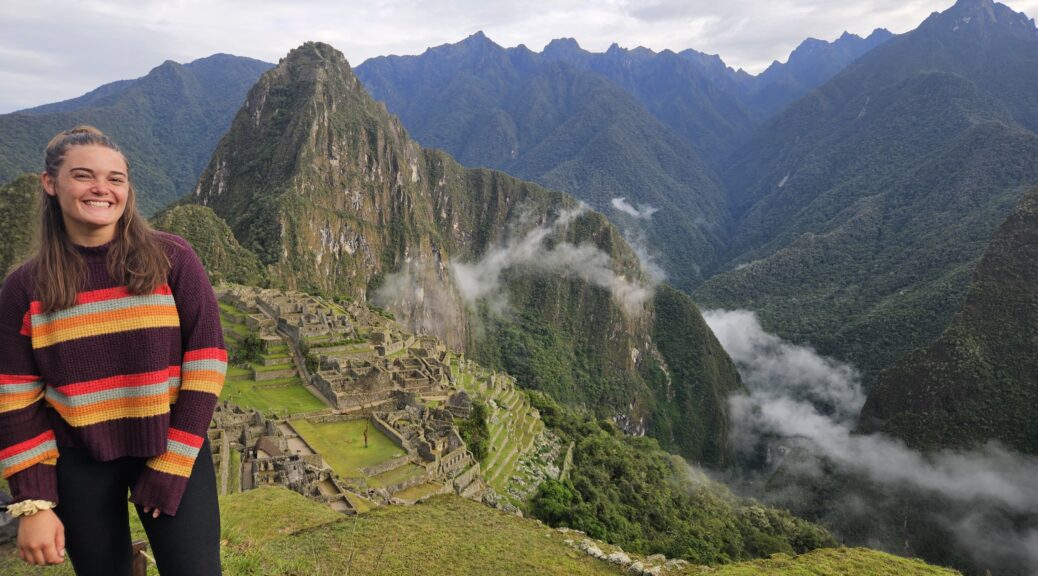
A Modern Wonder of the World
In mid-December, I trekked 4 days and 3 nights to one of the 7 Modern Wonders of the World, Machu Picchu. This marks World Wonder number 3 for me, after Petra and Chichen Itza. Just missing the Colosseum, Great Wall of China, Christ the Redeemer, and the Taj Mahal. I went on this adventure alongside Kersten, my BFF since day 1 at UVA. After spending a week at an animal rescue shelter in the southern Amazon Rainforest, she met me in Cusco for a week of history, shopping, and trekking.
Day 1 of the trek was marked by a 4am departure from Cusco (I’ll get to the beauty of Cusco later – we spent 3 days there, on the front and back end of the trek). The first leg of the trip included a 3-hour car ride to Soraypampa, where we were met by a 3km uphill climb to Humantay Lake. The lake reminded me of my Peruvian home back in Ancash, which is littered with these beautiful, teal-water destinations. This day was easy – the guides plan it as such to help trekkers acclimate, as the lake and our lodging that night sat above 4,000 meters (13,122ft). I thought to myself, “Good thing they make Day 1 easy for the Peruvian newbees, whereas I’m a pro to the altitude.” Silly me. I am ashamed to say that at 10pm that first night, I found myself in the chilly outdoor bathroom, throwing up … amongst other things. This is the second time I’ve gotten altitude sick in Peru (locally known as “soroche”), both of which occurred after eating too much at a new high altitude (the first happened during my first week living in Ancash). Moral of the story, watch what you eat, people.
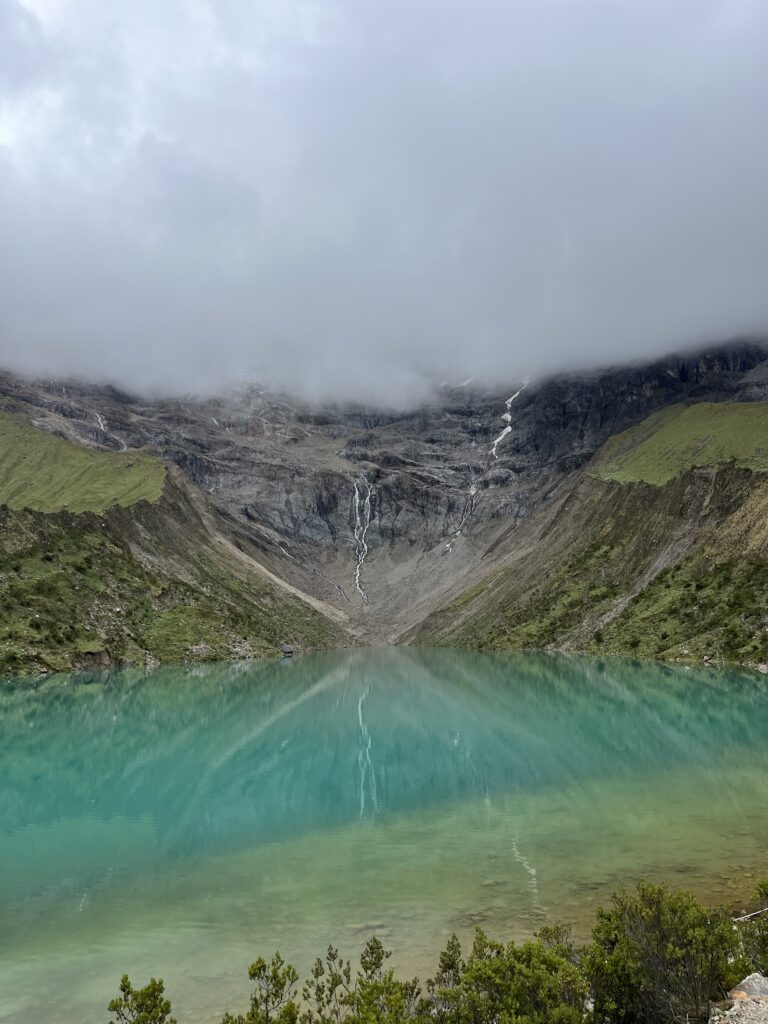
4,200m (13,779ft)


Anyway, the next morning I felt like a champ, ready to hike 22km. We awoke, packed our things, and trekked uphill for breakfast … needless to say, I didn’t eat much of it. As we peaked the hill where the dining area was, Kersten and I were hit in the face with an insanely clear view of Salkantay Mountain in the distance (the pass through Salkantay Mountain was our main destination that day). Expectations of clear skies were low coming into the trek, as December is the start of wet season. So, we were beyond pleasantly surprised.
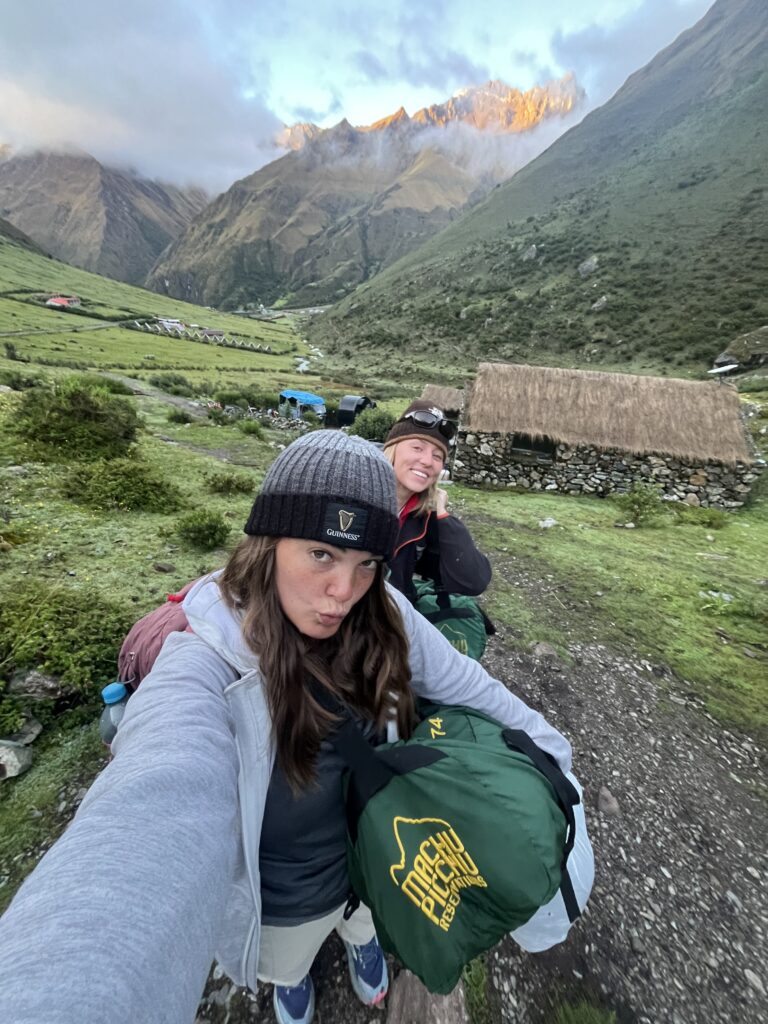
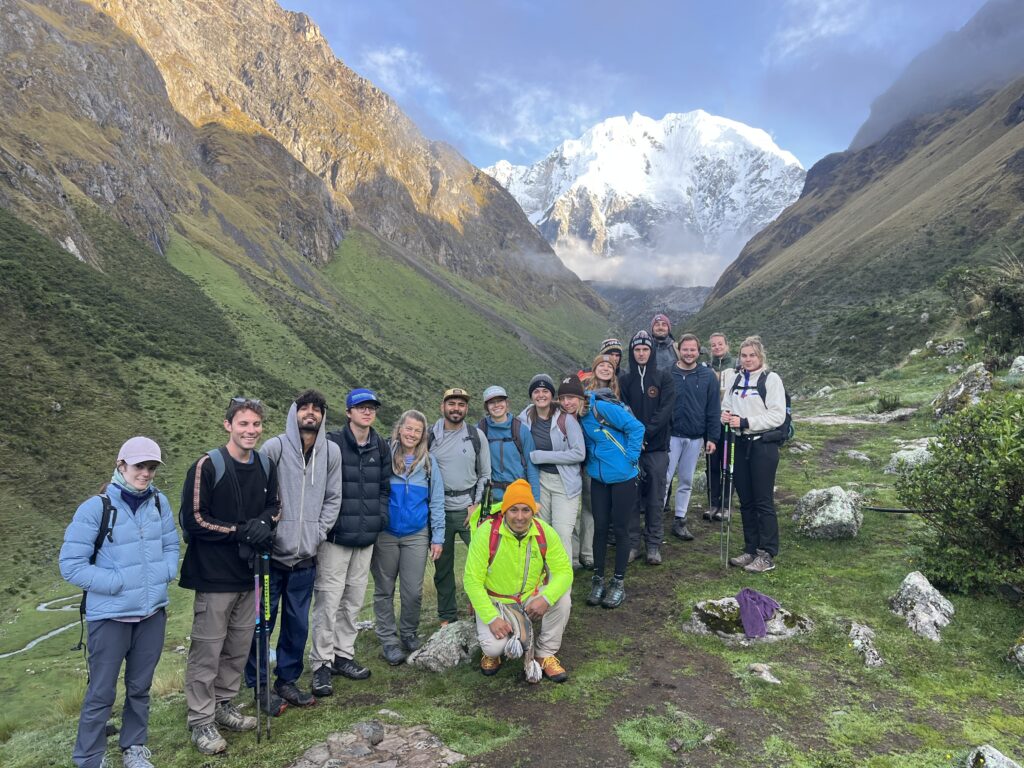
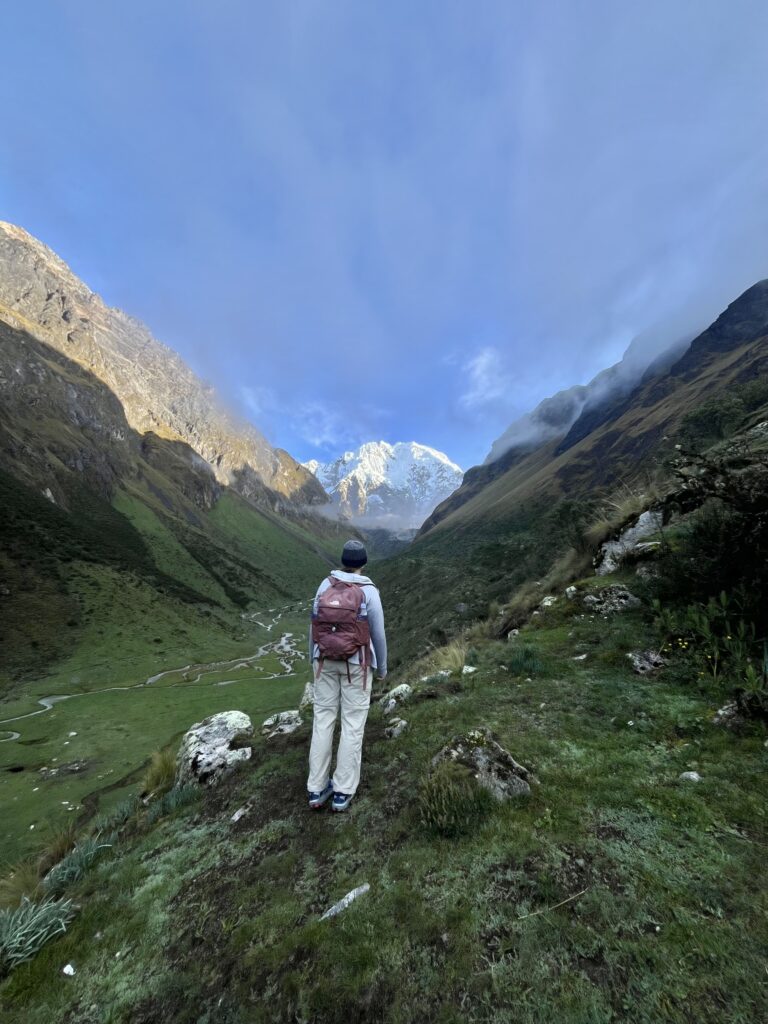
That day was the hardest, with hours of uphill climbing right off the bat to reach the Salkantay Pass (4,630m/15,190ft). At the top, our guide showed us a traditional Peruvian ritual, offering coca leaves to the earth and sun, as the other guide serenaded us with a traditional Peruvian flute. If someone asks me, “do you recommend taking a guide to Machu Picchu?” I would 100 times say yes. Not necessarily to lead you through the path, which is well-trafficked, but to teach you the intricacies, anecdotes, and viewpoints of the Incas. For example, I learned that nevados (snow-capped mountains) and colibris (hummingbirds) mean so much in Incan history, as they connect the three worlds: the under world, our world, and the heavens. Nevados, because of the mere size of them, is thought to pass through each world, while colibris are recognized as inter-world messengers.
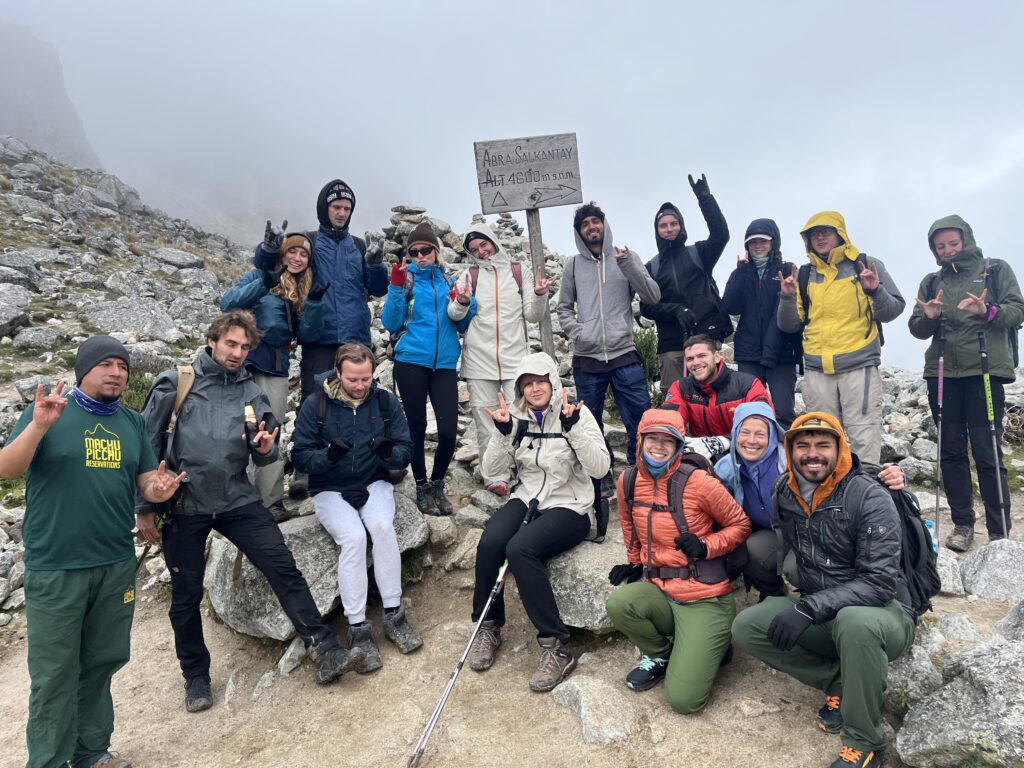
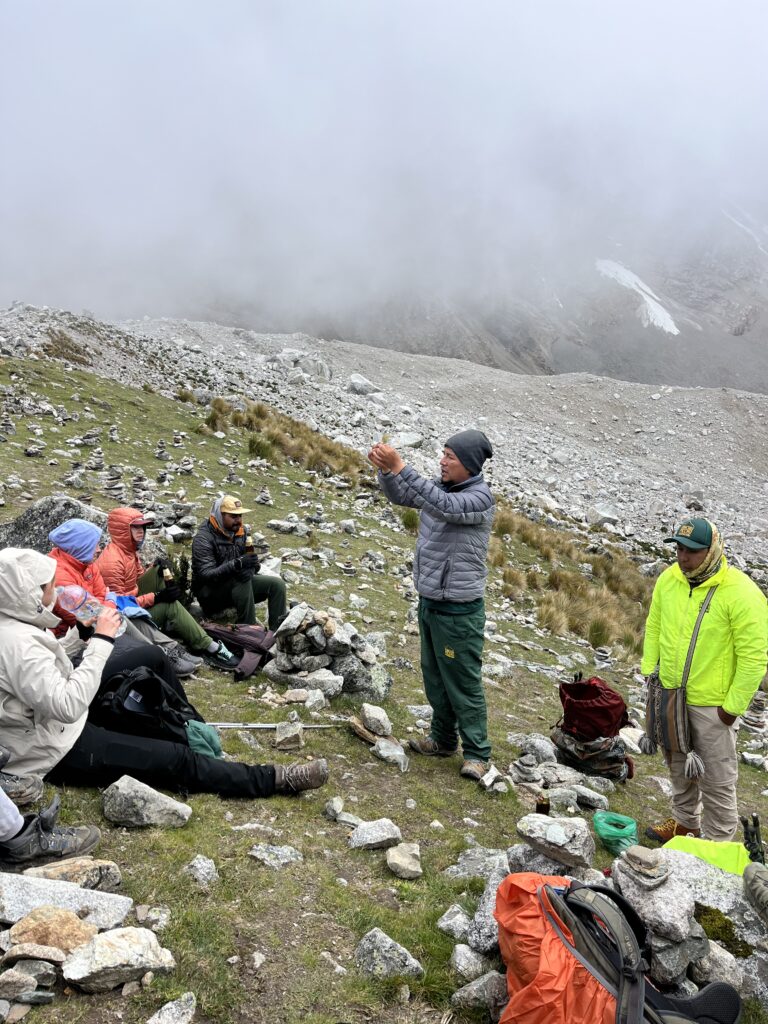
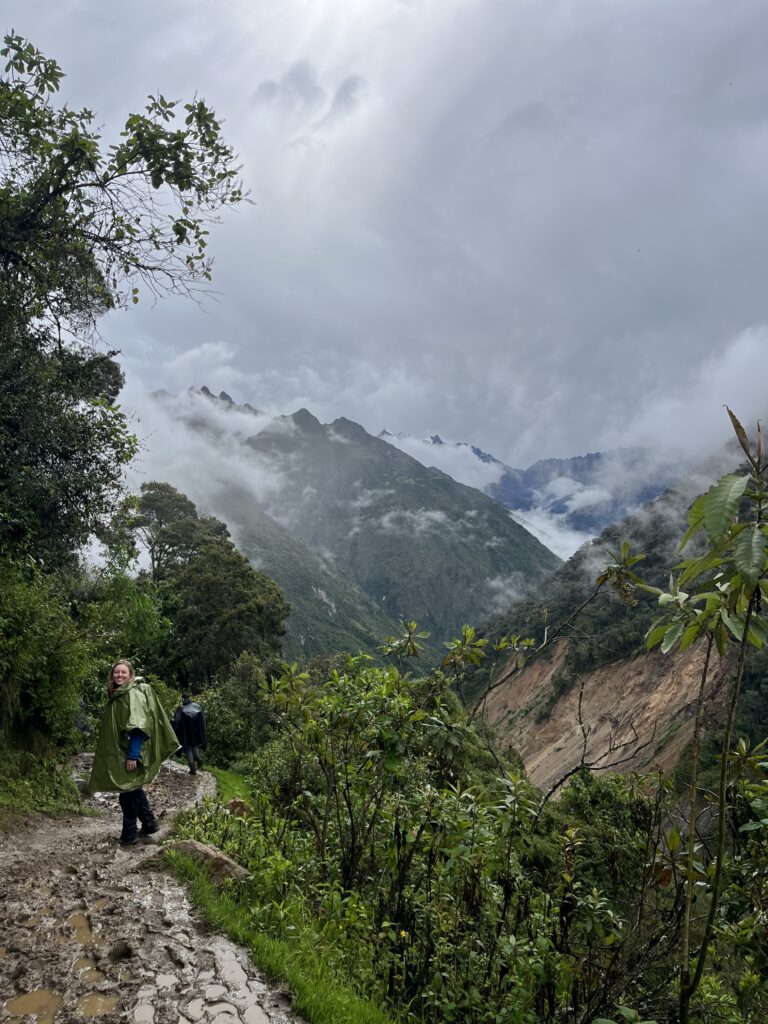
After the Salkantay pass, Day 2 was an easy downhill … though we did indeed get poured on for a couple hours. That detail aside, we stayed the night in glass domes, which were far fancier than I had anticipated. While “glass domes” sounds majestic, they were also mini condensation machines, so Kersten and I kept our door cracked all night to not wake up to our own liquified breath and body heat dripping down on us.
Day 3 was easy. We opted for a coffee tour, right next door to our glass domes, followed by hot springs, followed by a 12km (2.5 hour) flat hike to Aguas Calientes, the town which sits at the base of Machu Picchu. We got a glimpse of Machu Picchu on the way, almost invisible to the naked eye. We would have missed it if it weren’t for our guide telling us to squint at a distant mountain peak. From that angle, it seems impossible to have placed something so magnificent up there. We’d have to wait about 15 hours to see it up close.
Aguas Calientes is a cute little town, albeit full of tourist traps from free Pisco Sours to more free Pisco Sours. If you look hard enough, they do have some great jewelry and tapestry. Unfortunately, we didn’t get to spend much time there, as we woke up at 4am the next morning to hike the final stretch to the gates of Machu Picchu. After a quick 4:20am breakfast, we walked about 20 minutes through Aguas Calientes, before starting the 47-minute uphill climb. I’m talking straight uphill, and at this point, the climate is jungle-like, so we were sweating big-time (pictured). At 5:45am, we made it the gates, changed our wet shirts, and walked through.
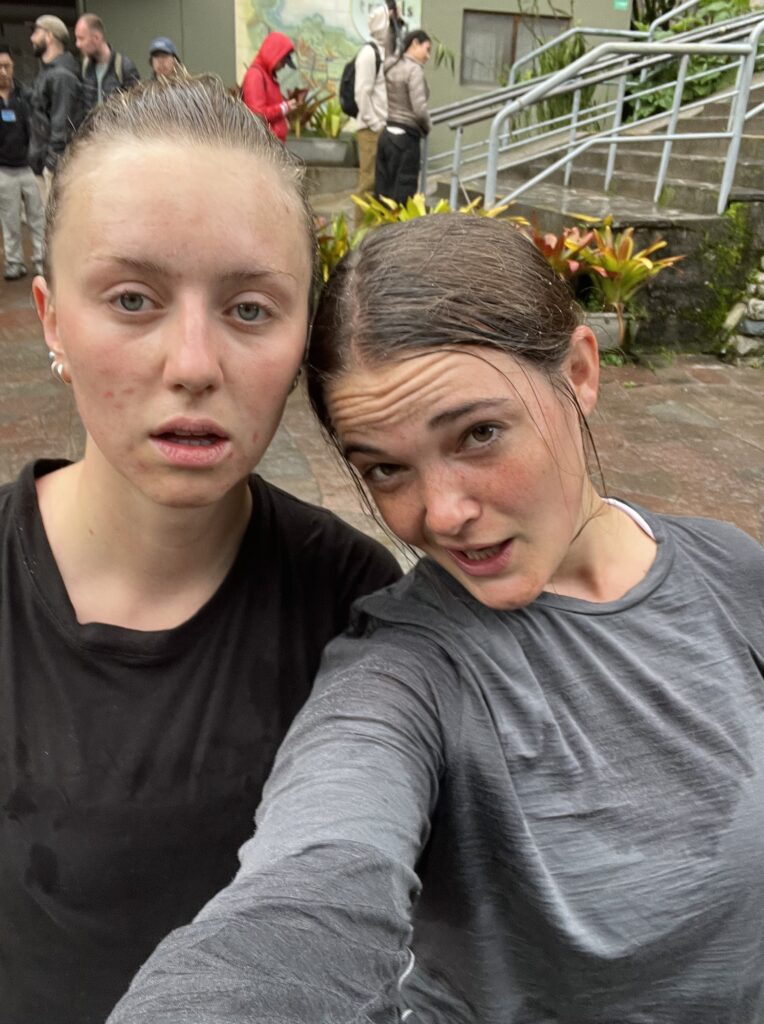
As we made our way through Machu Picchu’s gates, I faced the unspoken fear of the past few days: a dense fog. As I contemplated the possibility of a permanently obstructed view, the Gods granted my wishes, and over the course of 15 seconds, the dense fog lifted, and Machu Picchu emerged.
While some people question the merit of certain World Wonders, there is no question when it comes to Machu Picchu. The stone structures, albeit in pieces, are magnificently set atop a pointed mountain, surrounded by huge, dark green, wavy mountains and not an inch of civilization in site. There is a huge stone which mirrors the mountain behind it, astronomically-focused designs, representations of nature everywhere you look, and a sacrificial, religious site atop a second peak – a 1400s Incan skyscraper, if you will.
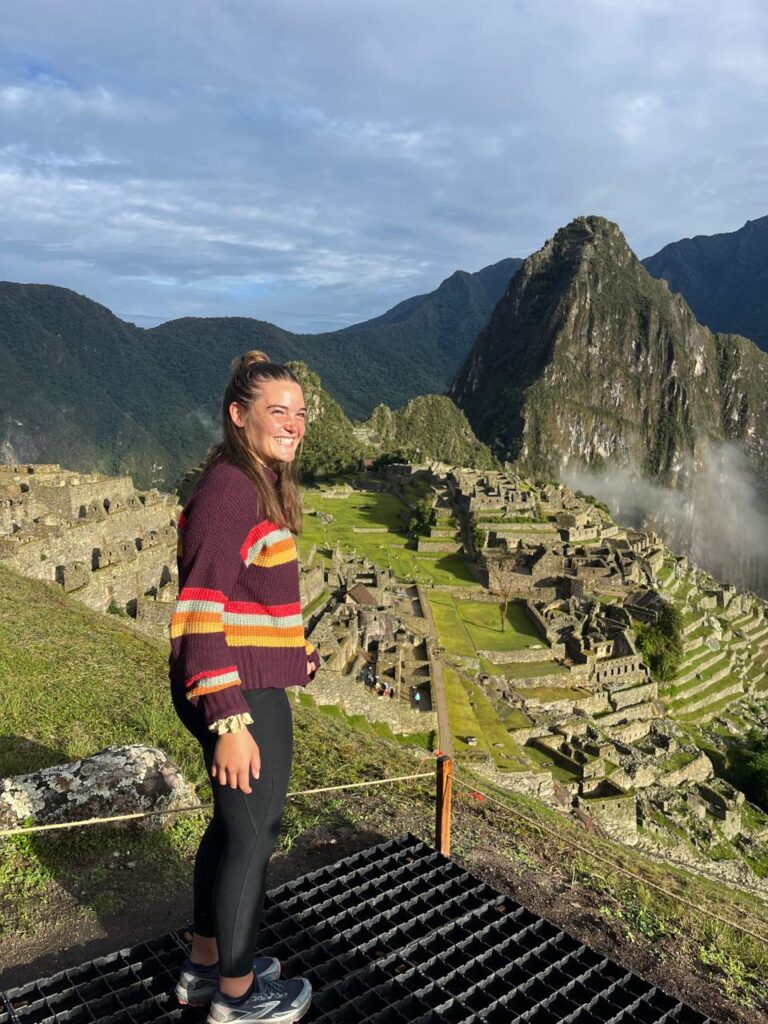
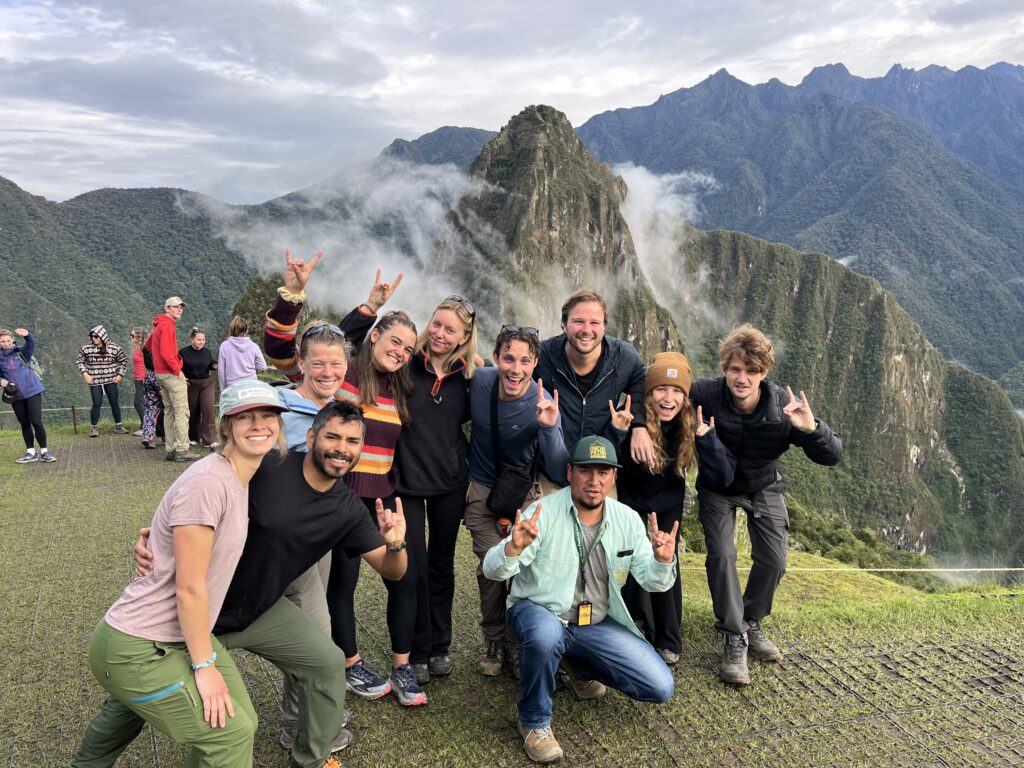
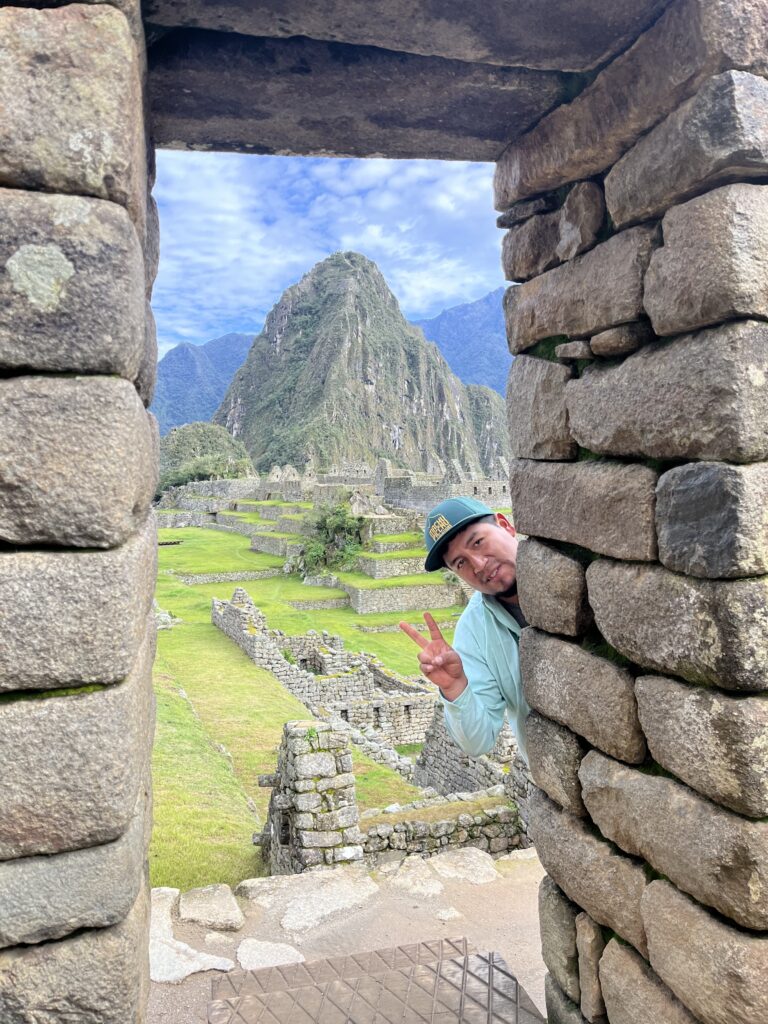

As I left Machu Picchu that day, I had a feeling I’d be back. If not in the next couple of years, then in 30 (with a family, dare I say?). It’s truly a magnificent place, and gave me a deeper love and respect for Peru than I already had.
A Note About the Beautiful Cusco
Now, Cusco. The place is beautiful. The architecture, food scene, its huge plaza surrounded by two large stone churches. Kersten and I attended a mass on our first morning there, which was a neat look into Cusqueñen life. We shopped. It is a dangerous, dangerous place for shopping. Everywhere you look, there is baby alpaca sweaters waiting to be worn. Not to mention the jewelry, tapestries, and woven blankets. While we had a couple days there on the front and back end of our trek, we wanted more. We didn’t plan a thing – just walked along cobble streets, had a spa day, stepped into cafés, got our ears pierced (sorry, Mom), and spent the night out.
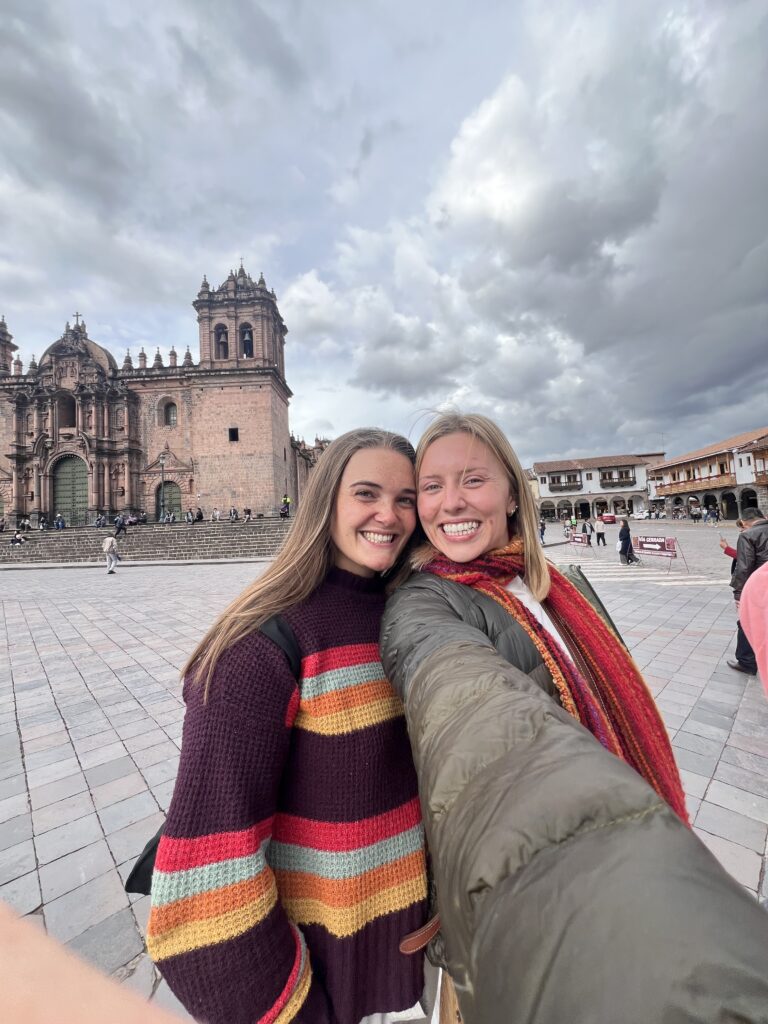
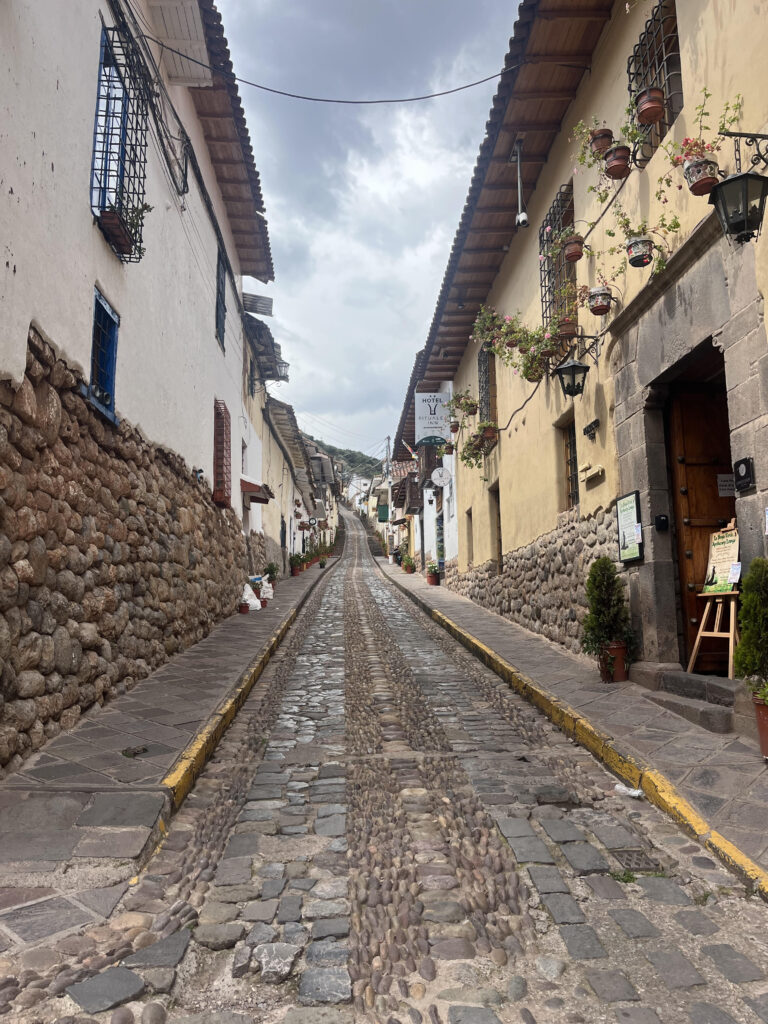
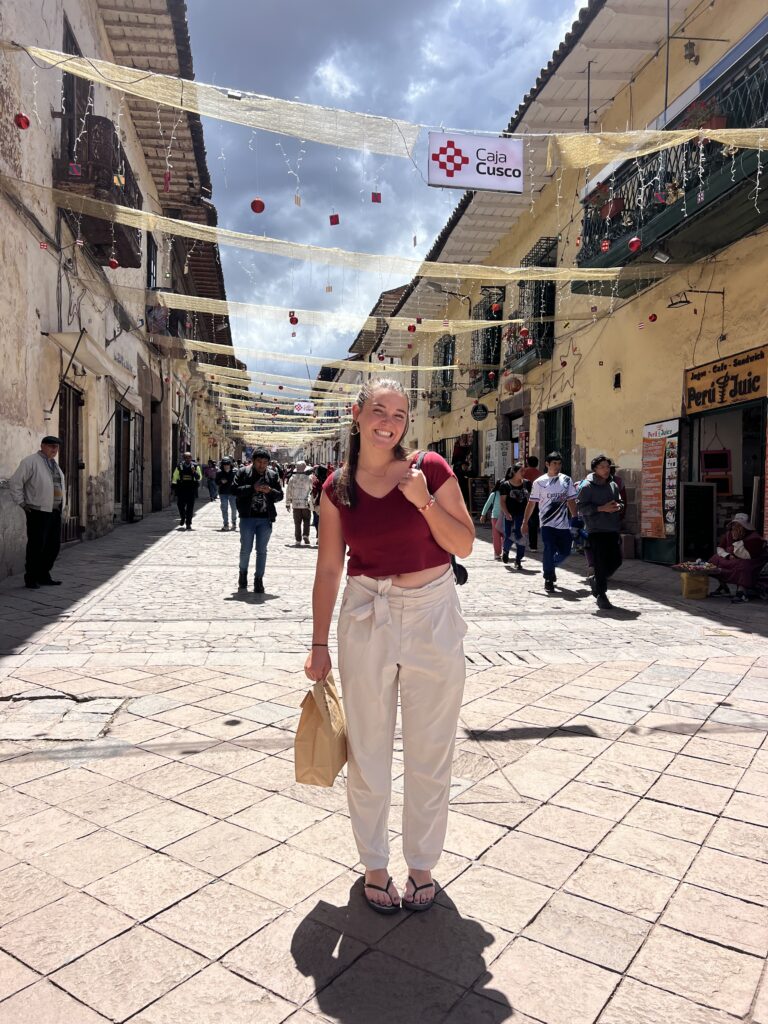
Coming into Cusco, I knew I had to try their local delicacies. More than anything, to tell my host family all about the culinary differences once back in Ancash. I ordered their version of cuy (guinea pig), which was only slightly different than that of Ancash. Cuy is a dish of the “sierra”, or the mountains. You won’t find it (not traditionally, at least) in the coast or jungle. In Ancash, they fry it, but in Cusco, it’s roasted.
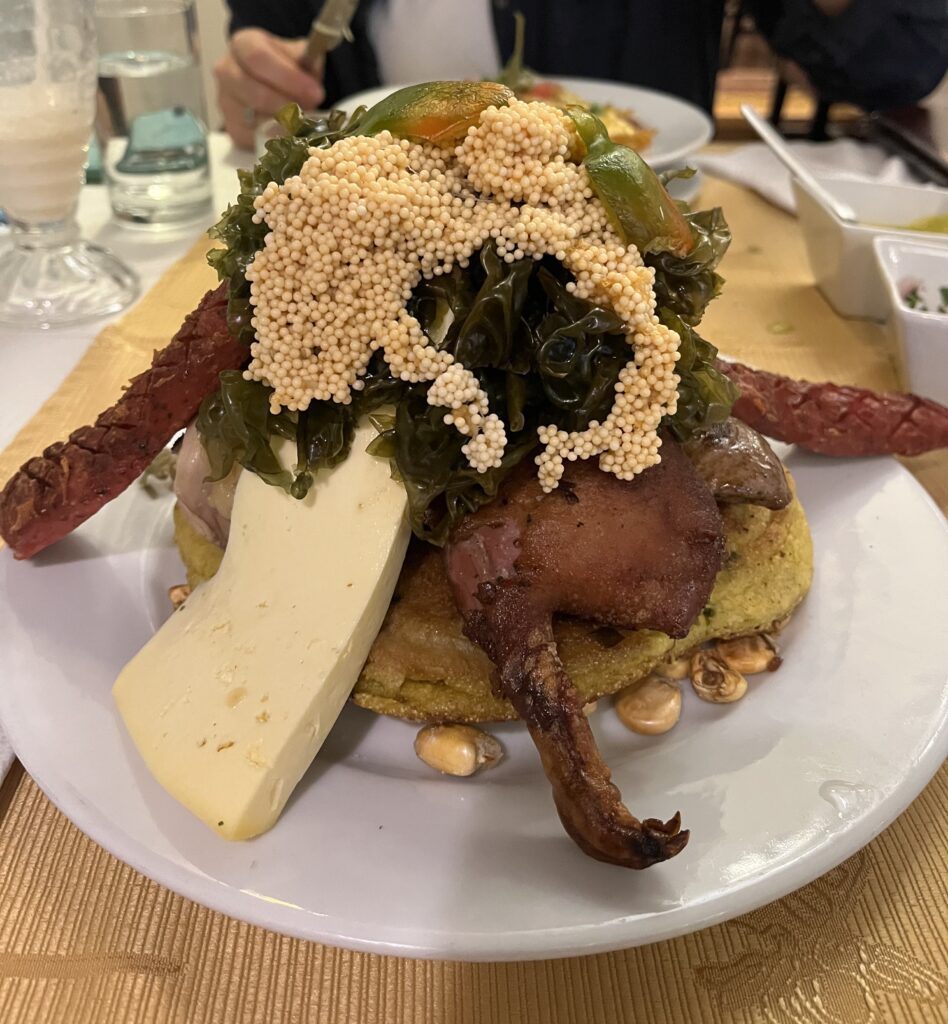
The most traditional Cusqueñan dish, told to me by my taxi driver from the airport, is chiri uchu. “Chiri” meaning cold and “uchu” meaning chili pepper in Cusqueñan Quechua (in contrast to Ancashino Quechua, where pepper is “utsu”). Chiri uchu is a mountain of food: chicken, cheese, sausage, fish egg, seaweed, cuy, canchita (toasted corn kernels), on a fried corn pancake. I made my way through half of it before calling it quits. My host family was happy to hear that I prefer the Ancash style.
Other than cuy, I had two other Cusqueñan must-trys. The first, tawri. Tawri is Quechua for chocho, which is a white bean traditionally eaten in Ancash in a salad of lime, salt, cilantro, and onion, with the bean served whole. It quickly became one of my favorite dishes in Peru. In contrast to eating the bean whole, Cusco cuisine mashes the beans up into a purée, served alongside meat and salad. I was told I would only be able to find the dish in the market, not in a restaurant … so to the market I went for a $2 meal.
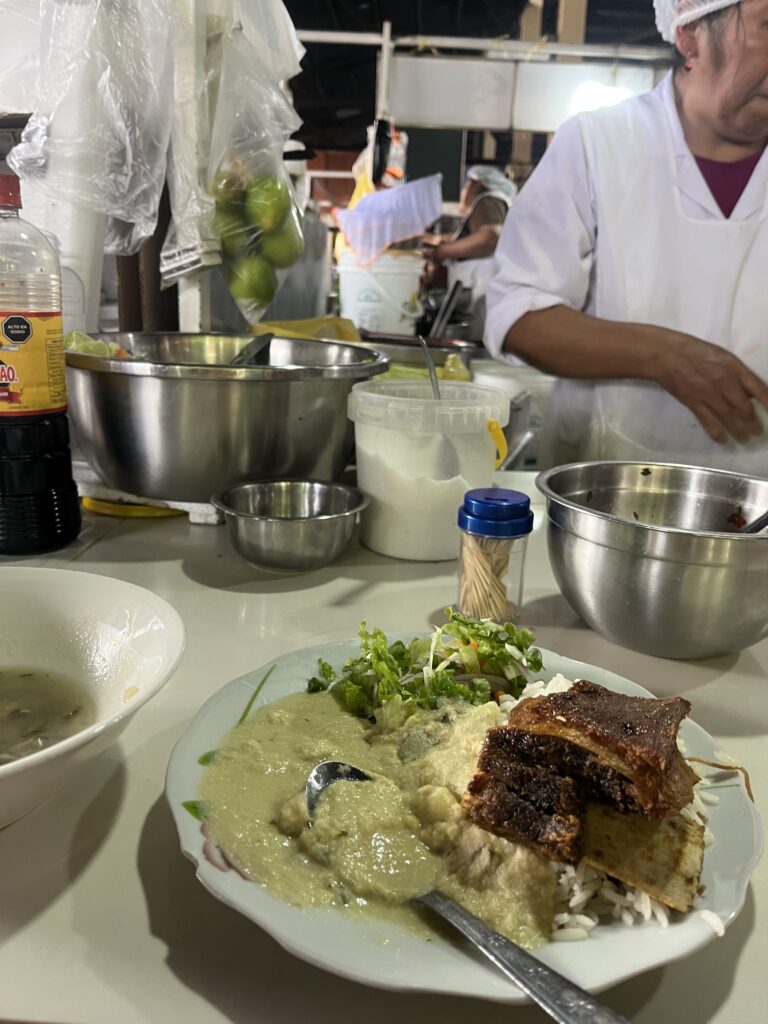

Now for the 3rd must try: alpaca. When moving to the mountains of Peru, I thought I would be surrounded by alpaca and llama, but in Ancash they are essentially non-existent. I think I saw 1 in the year before visiting Cusco. Alpacas and llamas are more native to the Southern Andes, where Cusco is located, and alpaca is a local dish I knew I had to try. It was delicious, though the meat is a bit dryer, less fatty than beef. Later on, I also dove into an alpaca burger. I think I’m okay sticking to cow from here on out.
4 thoughts on “A Modern Wonder of the World”
Oh my Heavens Lucie! You are absolutely amazing. Those trecks and the heights that you are going are incredible and my heavens I totally empathize with you in that I got in Cusco, which was also one of my favorite places I visited in the world, and got sick. When you talked about the Seven Wonders I hadn’t thought about that in a long time, so I counted, and I’ve been to six and Bill’s been to all seven! You’ll have them all down in the next 10 years, I’m sure!! I love your blogs and continue to be fascinated by your adventures that you share in such beautiful prose! Bill and I are off to Asia…Singapore, Vietnam, Thailand and Hong Kong in a few days…just a byproduct of those of us Peace Corps volunteers!! Travel forever!! Love you sweetheart!! Sally-Ann and Bill
Let’s hope I make it to all 7 in the next 10 years! Have so much fun in Asia, can’t wait to travel like you guys. Give Bill my best! Much love <3 Lucie
First off, your photos are spectacular. Even the food ones look right out of the pages of a magazine. Culanary delights for sure. What an incredible opportunity to go to Machu Picchu. And the fact that you hiked in is so impressive. Once in a lifetime trip to be sure. Were you on this hike with other PCV’s, or a group of strangers (minus your BFF)? I got to experience Machu Picchu over facetime with Claire when she visited about 5 years ago. It was the highlight of my day as my employees and I gathered around the phone as she gave us a personized tour around this historic site. Even with facetime, I was overwhelmed with its beauty. You have been so fortunate to have experienced so many amazing things while in PC Peru. How is your project coming along? Would love to hear an update.
As I always do, I will update on Claires PC Rwanda experience. I wish it was as delightful as your experience, but we all have to just roll with the punches and deal with what we get through PC, good and bad. I know I already told you about the evacuation to the US this past October – November due to an ebola type virus (she was only in her site 1 month when this occured). After returning in December there was IST, and then back to her site in January. Then in late February, Rwandan rebels went across the border into the Congo, capturing the 2nd largest city of Goma (lots of cobalt mines). With the chaos of the Rwandan rebels, 40,000 Congolese rushed into Brundi as refuges within 24 hours. Claire’s site sits very close to both countries borders, within an hours drive to both countries. Peace Corps headquarters called her and 10 other volunteers and calmly asked them to come to Kigali, but not to tell anyone, not even their site supervisors. They were not even told why they were being requested to come. Within an hour of the phone call, another volunteer in her region arrived to pick her up, and as Claire was locking her house door, the other volunteer received a rumor on her phone from other PCV to expect to not return. Claire quickly went back into her home, grabbed her backpack, threw in her computer, and a few things she felt were important like some $$, but no room for clothing or sentimental items. Once in Kigali the 11 volunteers were informed about the events along the border with the Congo, and that there was put in place by the US Embassy a “NO GO” zone. So they sat in a hotel in Kigali for a week and then were sent out to stay with other volunteers in other parts of the country until PC could find them new sites. Claire told me that yesterday, she signed her new lease but will not arrive to her new site until next week. As you can imagine, it has been quite emotional for her. She has to start all over again in a new community, new home, new supervisor, new market to navagate, find a new tutor, replace all her furnishings, get new clothes and shoes, and the list goes on from there. The new area is in the savana where it is hot, flat and dry so after coming from the hills where the climate was cool and comfortable, she says it justs adds another layer to the mental adjustment she is undergoing. She knows it will all be ok in the end, but looking forward feels overwhelming. My sister Robin was a volunteer in Uganda (Northern border of Rwanda) and still has strong local relationships. Robin was able to contact a Ugandan friend who is going to try and go to Claires old PC home in SW Rwanda to collect her belongings and bring them to her. I hope he is able to pull it off. I agreed to pay him for the job. We will see if happens. I’ll let you know.
Until your next blog, soak up all Peru has to offer you. Your days there are dwindling. I feel like your 1.5 years have past so quickly. Enjoy every minute.
Hi Holly! Thanks for the comment. We hiked with a group of strangers – mostly Belgium and New Zealand, and a family from Idaho. My project is just getting started. Funds were paused for a bit with the Administration change, but we were notified this week that things can continue as normal! So, I’m in the logistics planning stage with my counterparts here at the health post. I hope to write a blog soon about my projects!
Wow, Claire has had quite the experience. I had heard about the conflict in Goma, and forgot she was around there. Glad to hear she’s okay. I’m sure she’ll adapt to the new surroundings eventually. Everything happens for a reason!